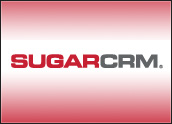
Nearly five years ago, I wrote a white paper that resonated around the industry like a three-point shot clanging off the front of the rim as time expired. A “brick,” in the vernacular of basketball; nonetheless, I view it as some of my finest work.
The paper, “The New Garage,” takes as its premise that cloud computing — not simply on-demand or Software as a Service (SaaS) — and platforms would be the next big thing in our business. The title derives from the ancient and honorable tradition of inventors tinkering at home in basements and garages to build the new, new thing, without the high and risky investments from venture capitalists that were then unwinding.
I thought then and now that it should be possible for software developers to build new products inexpensively with available resources rather than through high leverage.
Five years later, I am happy to report that much of what I forecast in that white paper has come to pass. Although the entire planet has not caught on, and while there remain numerous very large software companies desperately trying to extend the paradigm of on-premise software licensing, it seems clear that cloud computing is here to stay.
A quick glance at the companies nested at the intersection of Routes 101 and 92 south of San Francisco is all you really need for proof. But if you doubt that evidence, there is Route 128 outside of Boston and hundreds of places in between.
Closing the Loop
On Monday, Salesforce.com announced some of the remaining pieces of the grand puzzle when it introduced Checkout, a capability that enables ISVs (independent software vendors) who develop products for Force.com, Salesforce’s platform, to sell and collect revenues through a cloud-based mechanism that keeps checks coming in on a monthly basis.
Checkout is a necessary component that, though its focus is financial rather than technical, enables the technology to fully function. It appears to me that with Checkout, Salesforce now has deployed a new closed-loop business process for cloud computing that starts with development, moves through distribution and sales, and culminates in the transaction and payment. Given what I have written already, perhaps I am not in a humble mood today, so let me only say that I had forecast this as well as the rest of the incremental rollouts of cloud computing over the last few years.
So what?
There was something else announced that I had not foreseen, something as revolutionary as the rest of cloud computing which I could not foresee. In fact, I had written the opposite.
Avoiding Overabundance of Choice
My major concern about platform computing has always been that it could end up simply replicating earlier platform models. Specifically, I was concerned that there would be a proliferation of platforms and that a platform could become as much a barrier to entry for developers as was the case in the mini-computer era.
The barrier to entry in those days was the abundance of operating systems and compilers that made cross-platform migration difficult. I had written that ISVs would need a way to genericize their applications for easy portability from platform to platform to ensure that none would become captive to a single platform provider. To me, this made good economic and business sense, but my thinking was too mired in the 1980s.
Today there are a handful of application platforms sponsored by large companies including Salesforce, Google, Facebook, Amazon and others with more coming. What interests me is the way these vendors have so far bent over backwards to ensure cross-platform compatibility. Applications built on Force.com can use data and applications on Facebook, use computing and storage and access documents, spreadsheets and presentations from GoogleApps. This is cool stuff.
The New Paradigm
Over the last few months, while the economic paradigm has been collapsing around us, Salesforce.com and its platform peers have been rolling out this amazing new business computing paradigm. Will this be the computing paradigm of a new economy whose straightened circumstances demand performance anywhere at rock-bottom prices? And more than simple computing anywhere, look at the applications: They are highly interactive, social and smart.
We’ll see.
In the nearly 10-year march from client-server computing, we have been treated to various names including ASP, on-demand, Software as a Service and then cloud computing and Platform as a Service, but the new paradigm requires a new and more encompassing name. Let’s call it “Platform as a Standard.”
Denis Pombriant is the managing principal of the Beagle Research Group, a CRM market research firm and consultancy. Pombriant’s research concentrates on evolving product ideas and emerging companies in the sales, marketing and call center disciplines. His research is freely distributed through a blog and Web site. He is working on a book and can be reached at [email protected].
























































Denis,
Ever given a thought on what seems to be the driving force behind adoption of platform standards? That way we can further drive cloud adoption further and faster.
It kind of reminds me of the evolution of DVD, with groupings and eventually real, all encompassing, ‘borders’ standards.
Looking forward to reading more of your ‘bricks’!
Best.
Alain Yap
Morph Labs